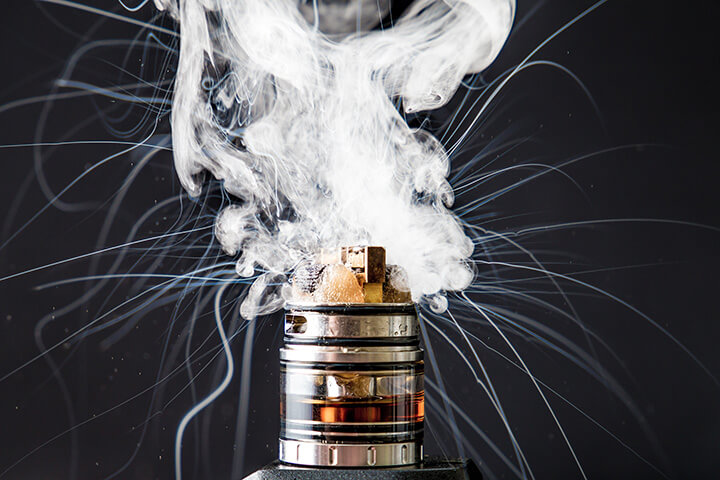Over the years, the health benefits of quitting smoking have been well documented; however, some former cigarette users are turning to e-cigarettes or “vaping” to help them quit. Vaping has also become popular among many people who have never smoked cigarettes. But e-cigarette use comes with its own set of risks.

E-cigarettes typically use a heated resistance coil to vaporize fluid containing nicotine and flavouring agents. The coil is powered by a control unit utilizing lithium-ion (Li-ion) batteries. Many of these devices use the popular 18650 type of Li-ion batteries. With coil resistances as low as 0.2 ohms and battery voltages of 4.2 V, these devices can draw over 20 amps of current! This is significant for a device that fits in the palm of your hand. The internal Li-ion batteries provide this power and have significant stored energy.
Dangers arise from this energy when it is not properly contained. There have been failures of e-cigarettes when charging as well as while they are being used.
A recent fire was caused when an e-cig battery failed while being charged, ruptured, and ejected hot gases out of the battery cap. This caused the e-cig to fly across the room and ignite nearby furniture. Had the resident not arrived home shortly after the fire began, the home could have suffered significantly more damage.
E-cigarettes have also failed violently during use or while not in use and stored in the user’s clothing. An analysis of the US Consumer Product Safety Commission’s (CPSC) National Electronic Surveillance System (NEISS) between 2015 and 2017 indicated there were an estimated 2035 e-cigarette explosion and burn injuries admitted to US hospital emergency departments. A Florida man was killed in May 2018 from what investigators determined to be “a projectile wound to the head” caused by an exploding e-cigarette battery. Other users have suffered severe burns to their bodies such as a New York man who was injured in 2016 when an e-cigarette exploded in his pocket.
The mechanism of failure for e-cigarette fires and explosions is typically a failure of the internal lithium-ion battery. These batteries can fail due to external mechanical damage, severe use such as overcharging, or improper manufacturing. These failures are similar in that internal short circuits of the battery cells lead to thermal runaway and eventual violent ignition of the lithium inside. Some common types of manufacturing defects include metal contamination of the battery internals during manufacture or cell separators of uneven thickness.
There are some recommendations to keep users of e-cigarettes or other devices with lithium-ion batteries safe. Always use the provided charger that comes with the device. The use of off-brand chargers can lead to battery damage and failure. Do not charge the device while absent or sleeping. This increases the chance that a problem won’t be recognized in the early stages. And finally, avoid the use of generic or low-quality lithium-ion batteries. As poor manufacturing is a known cause of failures, using high-quality items can help lower the risk of a potential hazard.
